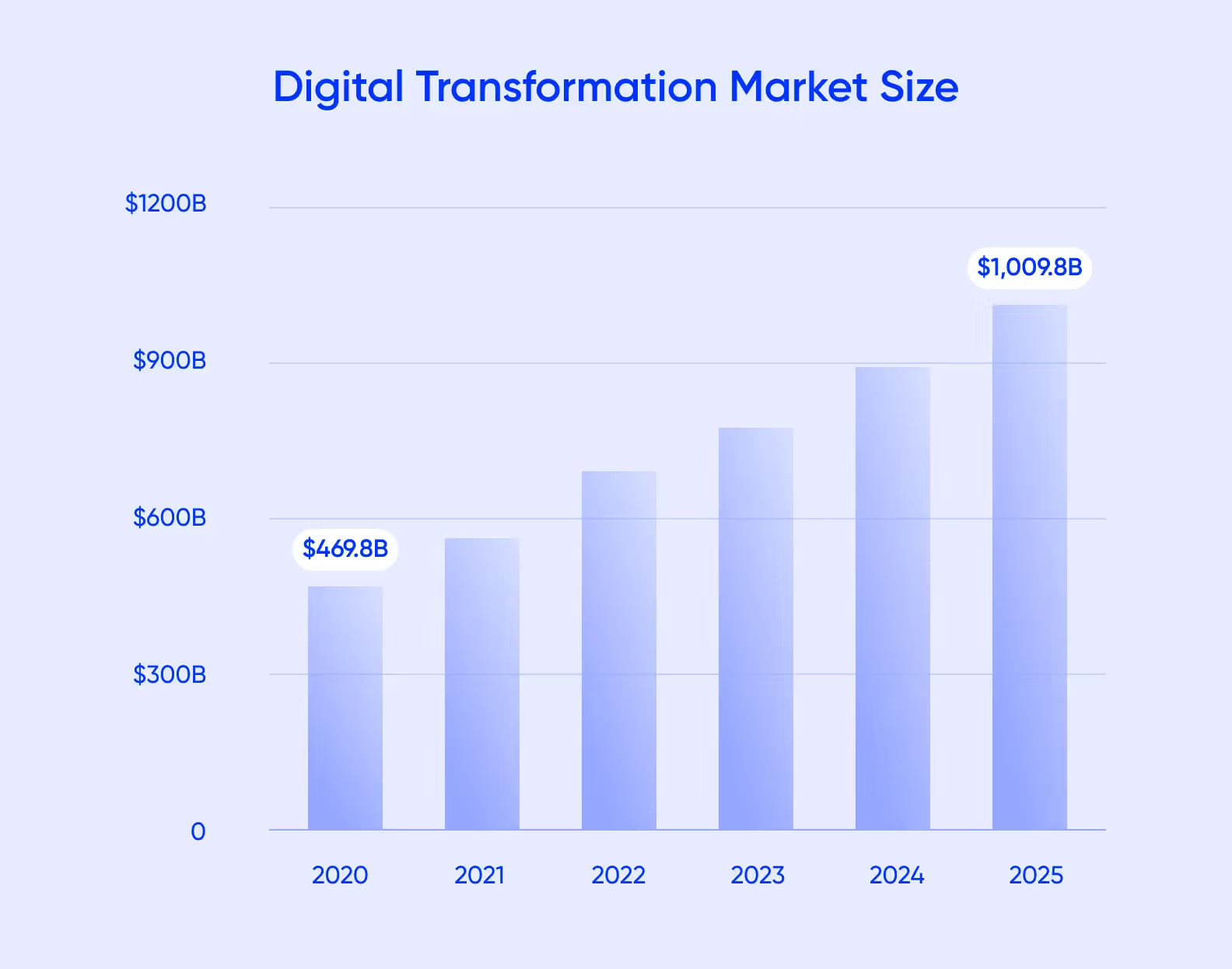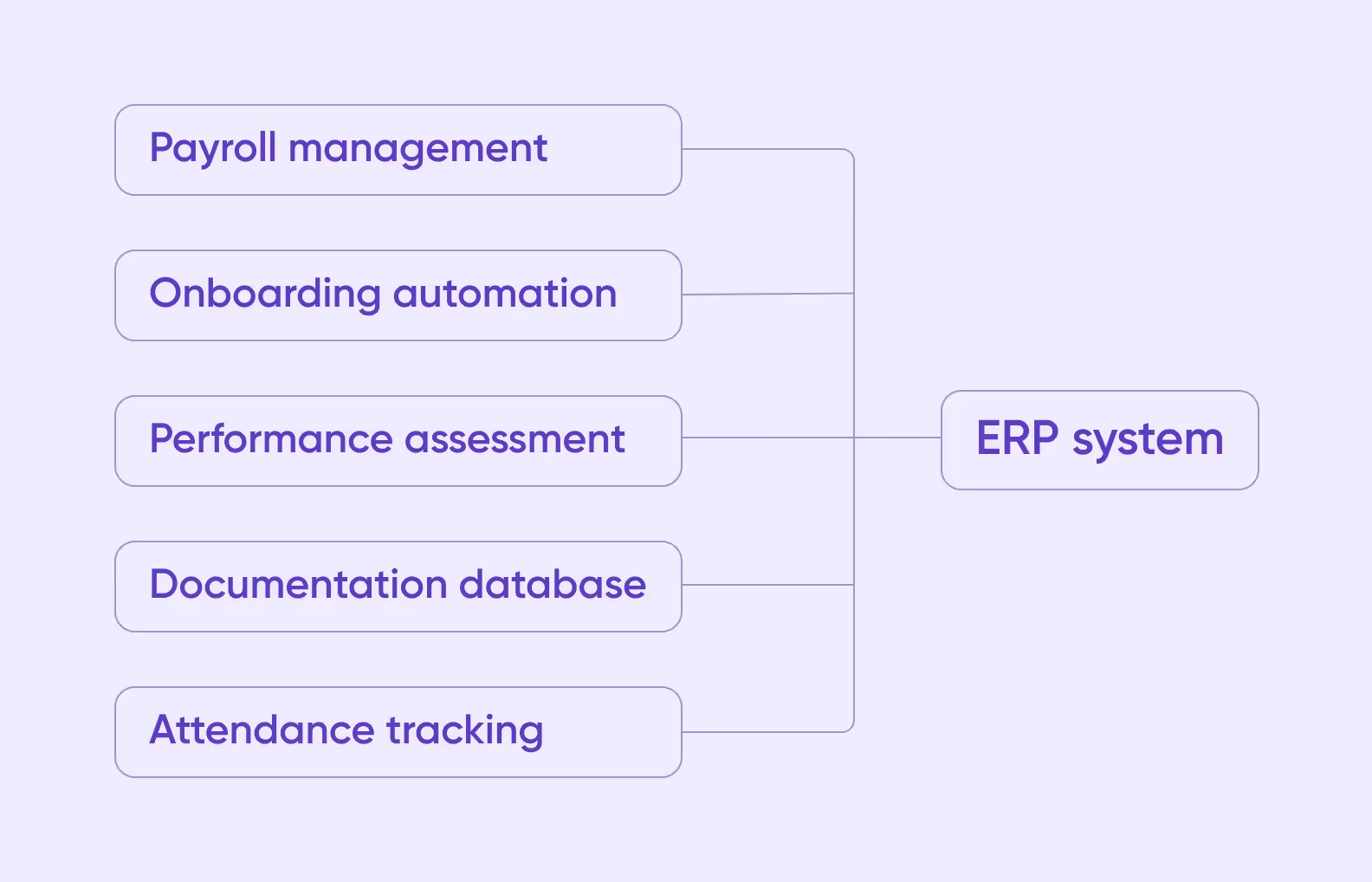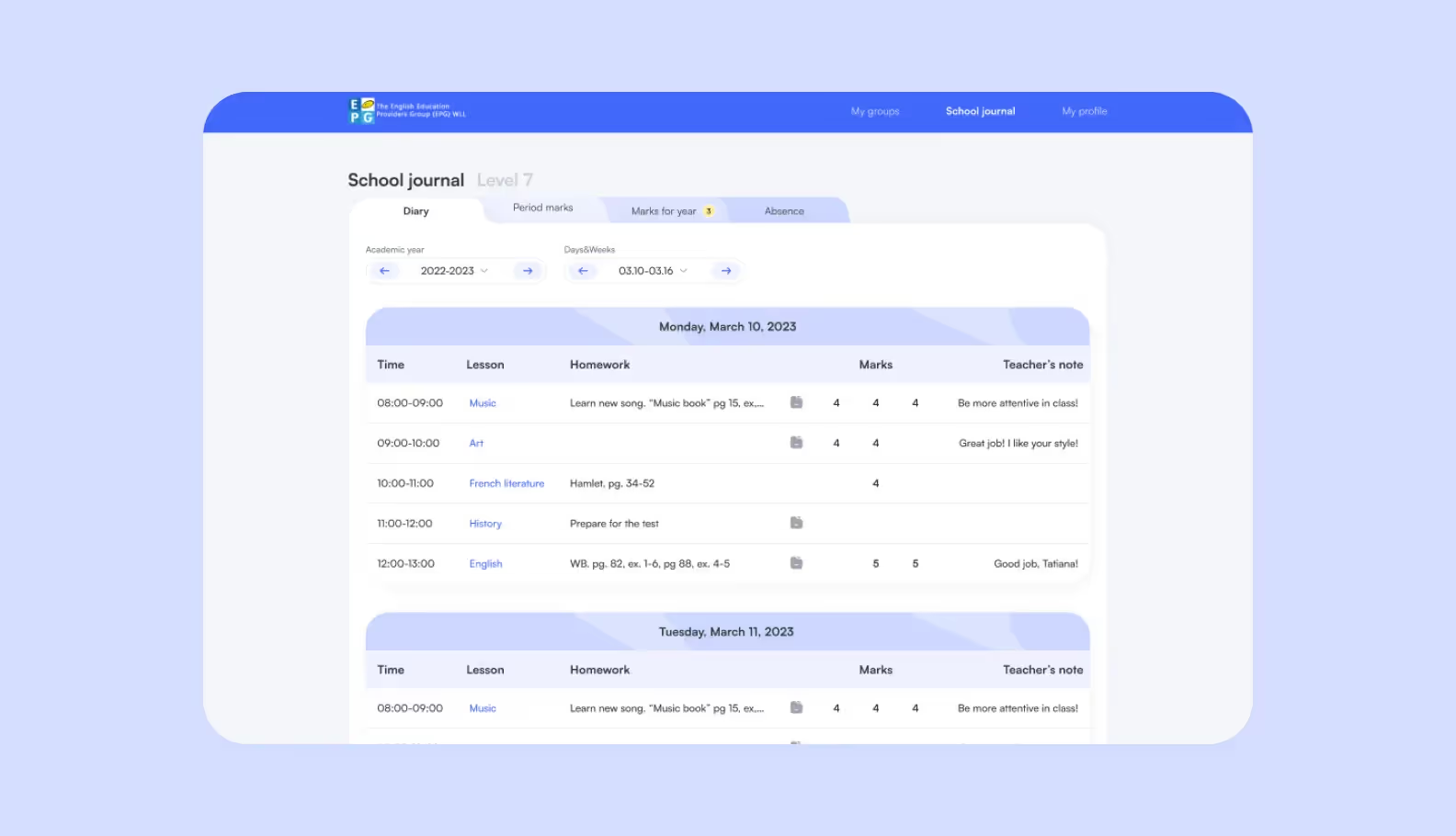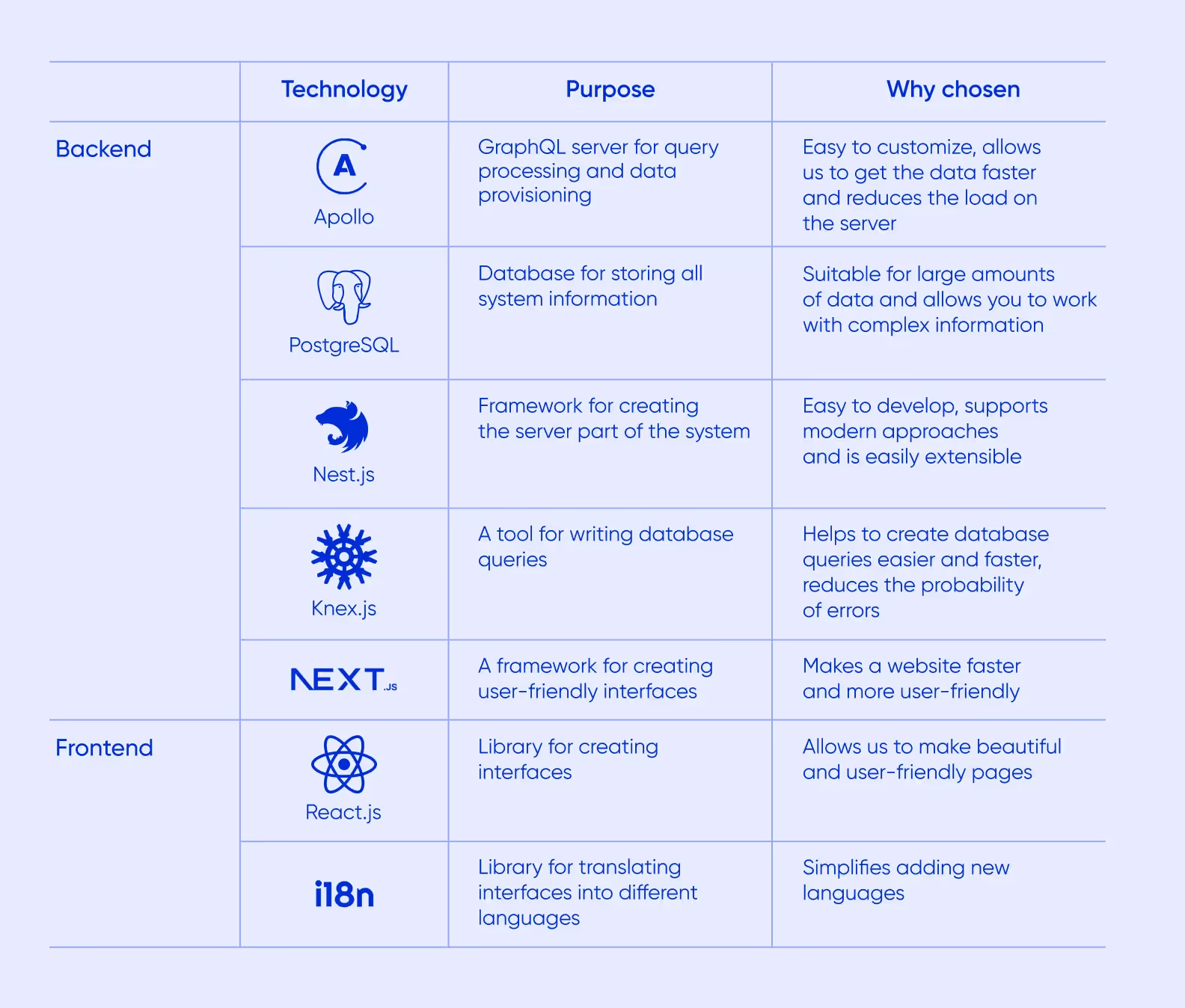


Efficient and timely management is crucial to any business. In 2025, it’s possible to keep track of every task and workflow in one convenient place — an ERP platform.
In this article, we’ll go over the characteristics, functionality, and types of modern ERP systems. We included a breakdown of costs and timeframes, along with examples of platforms we have built for our clients.
%20(1).avif)
Transparent and measurable processes? Сheck. Real-time accessible data? Check. Productive cross-team collaboration? You got it.
Say goodbye to profit-ruining mistakes with an Enterprise Resource Planning system — a powerful tool for streamlining every business operation inside one comprehensive platform.
An ERP system is a business management platform designed to optimize a company's workflows in every division.
Modern ERP solutions combine the functionality of several software applications with a secure unified database, AI-driven automation technologies, and seamless cross-department integration.
In 2025, the main question is how to choose an accessible solution that will deliver results, age well, and fit right in.

While it’s true that ERP platforms differ depending on business needs and niche specifics, there are several basic attributes of a well-developed, functional system.
Your business will evolve, and an enterprise resource planning system has to scale with it. A well-built architecture allows adding new features and roles, expanding the database, and changing module contents without losing the core logic.
Implementing ERP solutions has its drawbacks. We can’t forget — every team member has to learn how to use this new software, so it’s crucial to simplify the interface to the max. An important part of the discovery stage is figuring out access levels and user roles, making sure there will be no unnecessary, misleading, or confusing features.
An ERP system is rarely a one-size-fits-all product. While bank workers need a standard web application, sales managers often work outside an office — at client sites or during events. They require a convenient app with the same access to real-time data and core functionality.
<div class="post_divider"></div>
⭐Our experience
When developing a CRM app for Koblik, an agricultural machinery company, we faced a unique request: the sales managers spent most of their time in (literally) a field and needed a powerful on-the-go system.
So, we built an application with an offline mode and automatic synchronization with the existing software — and since the UI mirrored the original CRM, the learning process was seamless. A quick but impactful change was made with people’s comfort and business efficiency in mind.

After 2 months of creating the design and 2.5 months of development work — the ERP app was ready for both Android and IOS users.
<div class="post_divider"></div>
A perfect enterprise resource planning system includes all the business processes taking place inside your organization. Of course, ERP software can also integrate client management operations — but usually CRM-style functionality is an addition to the main structure, not a core feature.
The examples below give a basic idea of ERP modules — the building blocks of every system. Integration between the modules minimizes the possibility of data silos. Accurate and up-to-date information exchange = less time wasted waiting and searching = more time for complex and creative tasks.
Money flow is the bloodstream of any organization. An ERP system should provide full budget control, automate billing and invoicing, track tax expenses, and even make data-based predictions.
HR management
If money is the bloodstream, people are, well… the muscles? Let’s ditch the metaphors: keeping a team motivated and productive is key for growth. Here’s how ERP helps the HR department:

An ERP platform can do everything a CRM system can, but better. Cross-module integration makes it possible to create connections between the internal and external processes. For instance, tracking orders along with real-time inventory data, or linking individual payments to profit forecasting.
Optimize routes, keep the documentation sorted, and track deliveries — an ERP system is a perfect hub for streamlining shipments of any kind. Clear and visible logistics make it easy to find solutions for lower costs and faster deliveries.
Every tiny detail matters when it comes to manufacturing, as each stage of creating a product comes with risks and possibilities. Build a perfect foundation for insights and analytics — a detailed review of timeframes, materials, and suppliers.
To navigate the market of ERP software solutions, start by evaluating your business resources. Do you have an IT department ready to take up program customization? Do you own on-premise servers, or will you need cloud storage? How niche is your market?
There are two major classifications of ERP systems: data storage method and development process.
Now comes the main decision. Can a ready-made ERP system work for your business? How do you know if it's time to create your own solution? Let’s compare 2 ERP software development processes.
We understand that developing an ERP system from scratch might seem overwhelming — and, let’s face it, not always budget-friendly. That’s why we love MVPs. Building a Minimum Viable Product can be enough to see the initial results: process efficiency improvement, data-infused insights, and team feedback.
<div class="post_divider"></div>
⭐Our experience
In 4 months, we developed and launched GSR — a web platform for online psychologist consultations.
.avif)
When our client’s business strategy evolved, it turned into a comprehensive platform with a role hierarchy system, dashboards, and a database.
Now, the GSR ERP software functions as an educational space for clients and practitioners at every skill level.

Business priorities and strategies change — and a custom ERP system goes with the flow. It allows developers to add or eliminate features and modules while maintaining precious data and a familiar interface. Off-the-shelf ERP solutions might be a good fit momentarily, but in the long run, they often lack scalability and support from developers.
We value our long-term clients and are ready to provide full support after the initial release: creating a high-quality product can be a journey.
<div class="post_divider"></div>
What exactly goes into building enterprise resource planning software?
Here’s a step-by-step journey of custom ERP development we did for EPG — a network of 42 private schools in Kuwait.

Our objective was to develop a customized educational platform that would organize the educational and managing processes of 42 schools in the network. Instead of using multiple third-party programs, our client was ready for custom ERP software development.
The initial idea was too complex and required a lot of time and resources. We estimated the costs and realized that we were exceeding the client’s budget, which is why the client decided to go with an MVP ERP solution first. The MVP included 2 roles instead of 4 and eliminated extra features like student-teacher chats, archiving, and enrolling students in additional lessons.
We decided to keep the appearance of the ERP software application clean and simple by using a block structure. The easy-to-use interface helps the user navigate efficiently and comfortably — even if there’s plenty of data.

This is where custom ERP development comes into play. Our client had an intricate discount system — promotions could add up. So the software had to include thought-through calculation formulas, as well as installments and refunds.
Another interesting task was to create admin panels for users with different access levels. Super-admin was able to view the contents, edit the information, and delete it. Other types of users (parents, teachers, and students) had limited functionality:

ERP software development has to be far-sighted. We knew that this platform would grow and acquire new features — so we built a powerful foundation with scalability in mind.

We don’t have a standardized tech stack for every project. Instead, we prefer staying flexible — every client has unique requests and preferences, and we’re happy to adjust.
After 11 months of work, we created a unique ERP software system tailored to our client’s needs and requests. EPG no longer has to rely on multiple applications — actually, quite the contrary: they now plan to sell their ERP system as a white-label solution.
We estimated the resources needed to implement 2 popular ready-made ERP solutions and several types of custom software we develop for our clients.
Implementing a comprehensive, integrated system is a big step for any business. Seasoned enterprises might find it challenging to change their ways, and startup teams might feel like they’re not ready for one — but the profit is worth fighting those doubts.
Knowing exactly what’s going on at every stage of a sales transaction, production sequence, or important delivery is like having superhuman vision. And suddenly you can clearly see where, when, and why something went wrong (or right).
The main benefit for the business. Plan and predict with all the data available in one control center with an ERP system.
Let the ERP system keep track of every key process within the company. When a human is needed, it notifies the right person in advance.
The main benefit for the business. Control regulatory compliance, financial errors, and stock levels effortlessly.
Human error is inevitable. Unless we delegate mundane, repetitive tasks to the machine. Save your team’s time and resources by implementing a structured, data-driven, and AI-powered ERP software.
The main benefit for the business. Allow your team to spend their work time on innovative, high-value projects.
Collect and manage real-time data inside a secure ERP platform. Use hierarchical and modular levels to ensure sensible access for every department.
The main benefit for the business. Make consistent knowledge your power tool for seamless management and market predictions.
Use a data-driven approach to indicate both the weak and strong points of your business. Make sure to include performance metrics and customer feedback analytics in your ERP functionality.
The main benefit for the business. As for companies with a physical presence — look into integrating IoT into your system for maximum optimization.
An ERP system makes every team feel included. Forgetting to send an email is not an issue if a crucial piece of information is already available for all the participants — as it should be.
The main benefit for the business. Create streamlined workflows with timely updates for fast and efficient teamwork.
Here is a thing to keep in mind: with enterprise resource planning software, you don’t have to pay for multiple IT tools, as those functionalities will be combined into one.
The main benefit for the business. Errors and wasted time cost money — while quick decision-making and analytical insights make money.
As you can probably tell by now — we’re big fans of enterprise resource planning systems. We know how to develop a solution your team will actually enjoy using.
However, nothing is perfect. While the main goal of implementing ERP solutions — business performance improvement — is usually worth the hassle, there are a few drawbacks.
Both out-of-the-box and custom ERP systems require a substantial payment. Ready-made software usually operates with monthly or yearly subscriptions, the cost depends on the number of users, modules, platforms, and specific features.
Custom ERP software development costs more, but in the end, it provides scalability, adaptability, and long-term value.
Building a system takes time and effort — even with the help of an ERP software developer, someone has to participate, understand, and share key business processes and connections.
Even the most user-friendly interfaces take time to get accustomed to. Not all team members enjoy learning new software and leaving their trusty Excel sheets — so it’s important to show why an ERP system is worth a few study hours.
An enterprise resource planning system is a powerful, integrated platform for optimizing all business processes, enhancing productivity, and organizing data. ERP solutions differ from off-the-shelf software products with monthly subscriptions to fully custom systems created from scratch.
An efficient ERP system is a strategic move for almost any business: a long-term investment in security, stability, and scalability.
➡️ If you have an idea for an ERP system — let’s talk about it. <a class="blog-modal_opener">Fill in the form</a> and get a free project estimation in 48 hours.